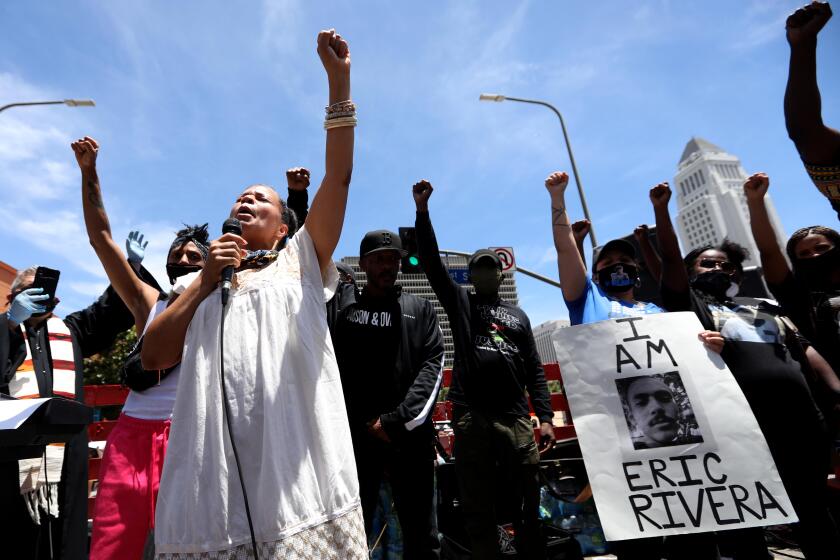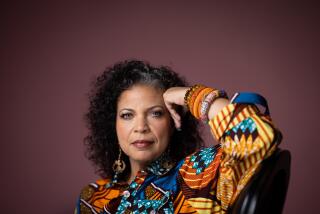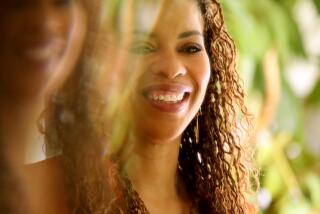After quitting BLM, co-founder Patrisse Cullors is healing: ‘I really thought I was gonna die’

- Share via
Patrisse Cullors cries when she remembers the fear she felt while checking into treatment for a mental breakdown, how she prayed during the entire ride to the facility.
“I really thought I was gonna die,” said the co-founder of the Black Lives Matter Global Network. “I thought I was either gonna get killed by a crazy white supremacist — you know, they’re gonna show up to my house — or I was gonna kill myself. I was really preparing for death.”
Cullors had endured threats and criticism for years, but the turning point came in April 2021, when news outlets reported that Cullors had been on a personal “million-dollar real estate buying binge.” She was denounced by the usual critics on the right. But the stories also generated anger from inside the movement, including from family members of people killed by police.
Cullors denounced the reports as misleading but stepped down from the Black Lives Matter Global Network a month later. Five weeks after that, in July, she entered treatment for post-traumatic stress disorder.
Now, six months since that day, Cullors, 38, is still recovering from the experience and says she’s still committed to Black lives. She’s also full of insights regarding what went wrong (and what went right) during her years in leadership. But instead of reaching out, she’s turning her organizing talents inward. She’s getting herself together.
“When the larger construct that you invested in abandons you, where do you go? I think that’s what I’m really trying to figure out right now,” Cullors said. “I’m in this place where I’m trying to heal what happened while also making sense of it.”
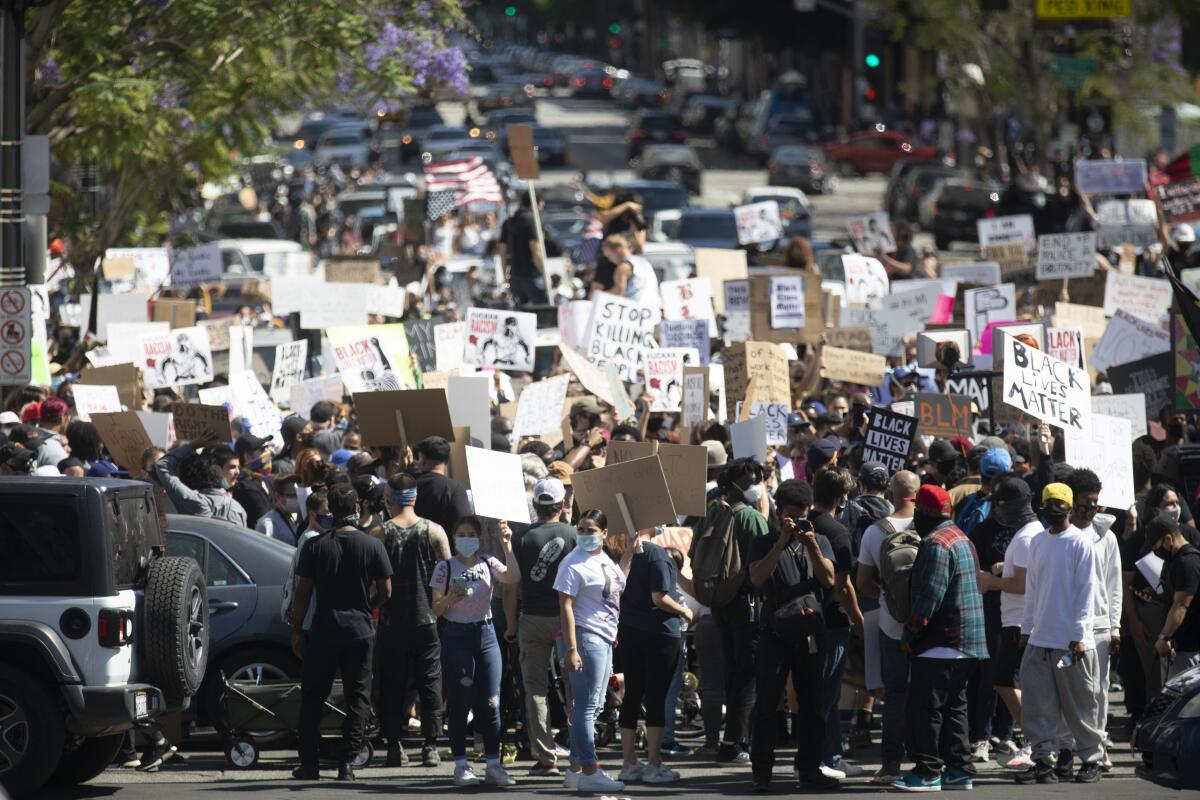
Black Lives Matter began as a rallying cry on July 13, 2013, after a Florida jury acquitted George Zimmerman in the killing of 17-year-old Trayvon Martin.
Alicia Garza, an Oakland activist, posted what she called a love letter to Black people on Facebook, writing, “Our lives matter.” Cullors, a friend of Garza, replied with the now ubiquitous hashtag #BlackLivesMatter. New York activist Opal Tometi then used the words while building a digital network of community organizers and antiracism activists.
The simple phrase struck a nerve, allowing Cullors, Garza and Tometi to rally other activists and form the Black Lives Matter Global Network with chapters nationwide.
Black Lives Matter took on an urgent meaning in 2014 when an unarmed Mike Brown was gunned down by a white police officer in Ferguson, Mo. BLM now described a movement, not just the namesake organization or the numerous like-minded groups protesting under the Black Lives Matter banner.
The movement and global network broke through in 2020 following the deaths of Ahmaud Arbery in Georgia and George Floyd in Minneapolis. Millions of dollars flowed into the network and polling showed that, for the first time, most Americans expressed some support for the movement.
By then Garza and Tometi had left to lead other organizations, but Cullors stayed on, determined to build out the Black Lives Matter Global Network infrastructure to meet the moment, to corral a loose network of organizations under one umbrella.

It wasn’t easy. The Black Lives Matter Global Network was made up of grass-roots organizers and being decentralized was a major strength; there was no one leader for critics to target and decisions were made, ideally, with group input. But that loose structure made it harder for the organization to move quickly. It was also a barrier for funding.
“I come from flat models, where we all do the work and there’s no hierarchy,” said Cullors, who started out in the arts and local organizing. She now sees value in a hierarchy, “that’s rooted in collaboration but is very clear on roles and responsibilities.”
She hired a nonprofit services leader, the Tides Center, to manage the organization’s back office and accounting. Then in a controversial step, Cullors assumed the role of executive director. Lastly, she created two arms of the organization, the Black Lives Matter Political Action Committee to engage in politics and BLM Grassroots to oversee the organization’s chapters.
The sudden reorganization exacerbated simmering tensions within the group. In December 2020, 10 local chapters calling themselves the BLM10 published an open letter claiming that Cullors became executive director “against the will of most chapters and without their knowledge.” They also claimed that chapter organizers had been prevented from informing the direction of the group and that most chapters had received “little to no financial support from BLMGN since the launch in 2013.”
Four months after the open letter, the New York Post reported that since 2016, Cullors had spent an estimated $3.2 million on four properties, three in the Los Angeles area and one outside of Atlanta.
“As protests broke out across the country in the name of Black Lives Matter, the group’s co-founder went on a real estate buying binge, snagging four high-end homes,” it read.
The story noted the $90 million the Black Lives Matter Global Network raised in 2020 and questioned how much Cullors earned as its head. Other outlets, including the Washington Times and Fox News, published similar stories within days. The takeaway for many readers was that she had purchased property using movement money.
In fact, Cullors did not purchase the properties with funds from the BLM Global Network , which reported she had received only a total of $120,000 since the group’s inception in 2013 and nothing after 2019.
She points out that she has had two lucrative book deals, one of which produced a New York Times bestselling memoir in 2018. She signed a production deal with Warner Bros. in 2020 to develop programming “for children, young adults and families.”
Cullors has another deal with YouTube, does public speaking, operates an art gallery in South L.A. and teaches at Prescott College, a private liberal arts college in Arizona.
“One of the biggest dreams for Black folks is land and home ownership,” Cullors said. “I knew that in order to have a certain level of stability I wanted to own a home and I also wanted people in my life to have access to home ownership. It means that I’ve co-financed homes, and I’ve supported folks to be on the path of home ownership. This isn’t new. Black women are often the primary breadwinners and supporters of our family members and community members.”
With Melina Abdullah and Patrisse Cullors playing key roles, Black Lives Matter has transformed from a small but passionate movement into a cultural and political phenomenon.
A conservative group called the National Legal and Policy Center ultimately took credit for investigating Cullors’ finances using public records and releasing the information to media outlets. The damage, however, was done.
In the aftermath, Samaria Rice and Lisa Simpson, both mothers of sons killed by police, released a statement calling on Cullors, the organization and other activists under the Black Lives Matter banner to “step down, stand back, and stop monopolizing and capitalizing our fight.”
Simpson, whose 18-year-old son Richard Risher was killed by Los Angeles police in 2016 in the Nickerson Gardens housing development, held a news conference outside of a South L.A. property owned by Cullors.
“Black lives don’t matter. Your pockets matter,” she declared.
“Y’all come into our lives and act like y’all got our back and y’all want to say ‘Black Lives Matter,’” Simpson continued. “But after we bury our children, we don’t see B, L or M, but y’all out here buying properties.”
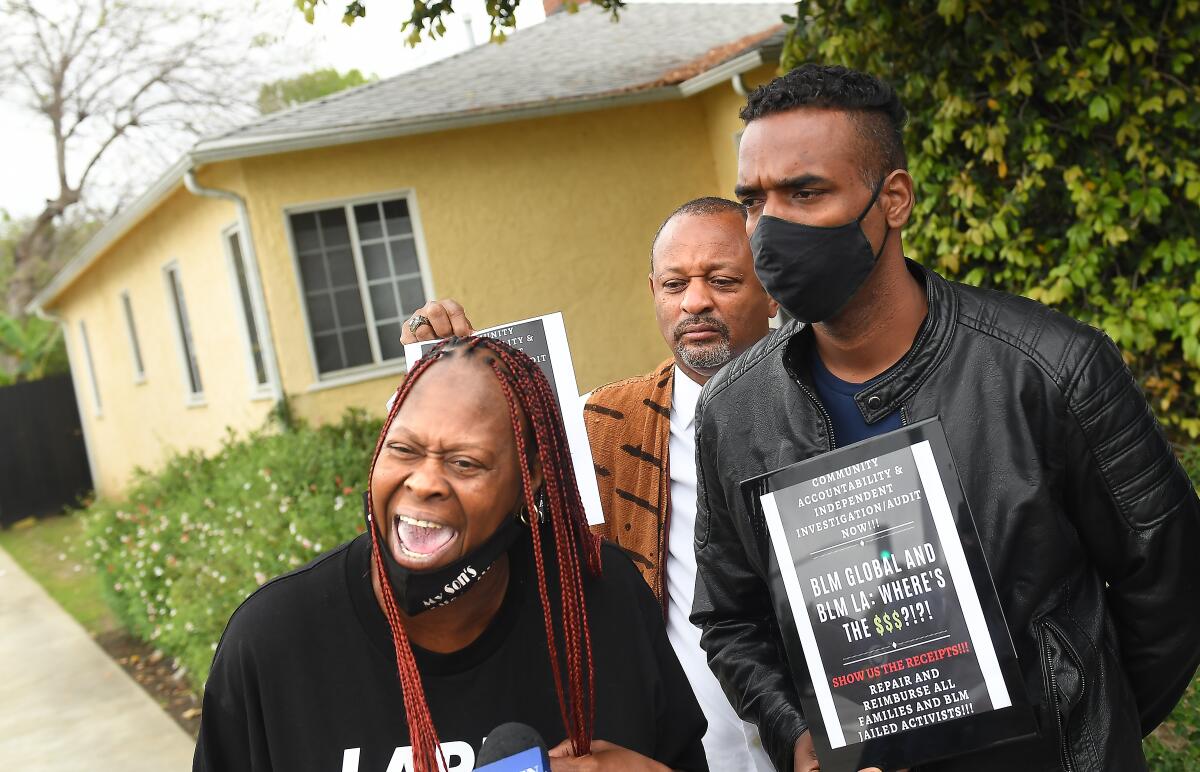
Six weeks later, Cullors stepped down from the Black Lives Matter Global Network.
Cullors’ mother, Cherisse Foley, was relieved. She’d seen how miserable her daughter was.
“I thought ... to myself, ‘You need to get away. You need to be away from something that’s going to cause you to stay the way you are because that’s not good on your heart,’” Foley said.
At the time, Cullors told the Associated Press she could step down because she had created “the necessary bones and foundation” the group needed to function.
That was only partly true, Cullors says now. She was exhausted and afraid; she felt misunderstood and attacked from all sides.
“I have never felt this objectified,” she said. “I’m not a human being to a lot of people. It doesn’t matter that I have a child, that I have family, that I take care of my brother who’s mentally ill.”
The stories about her finances and other criticism had one aim, she said.
“It wasn’t just a character assassination campaign,” she said, “but a campaign to actually get me assassinated.”
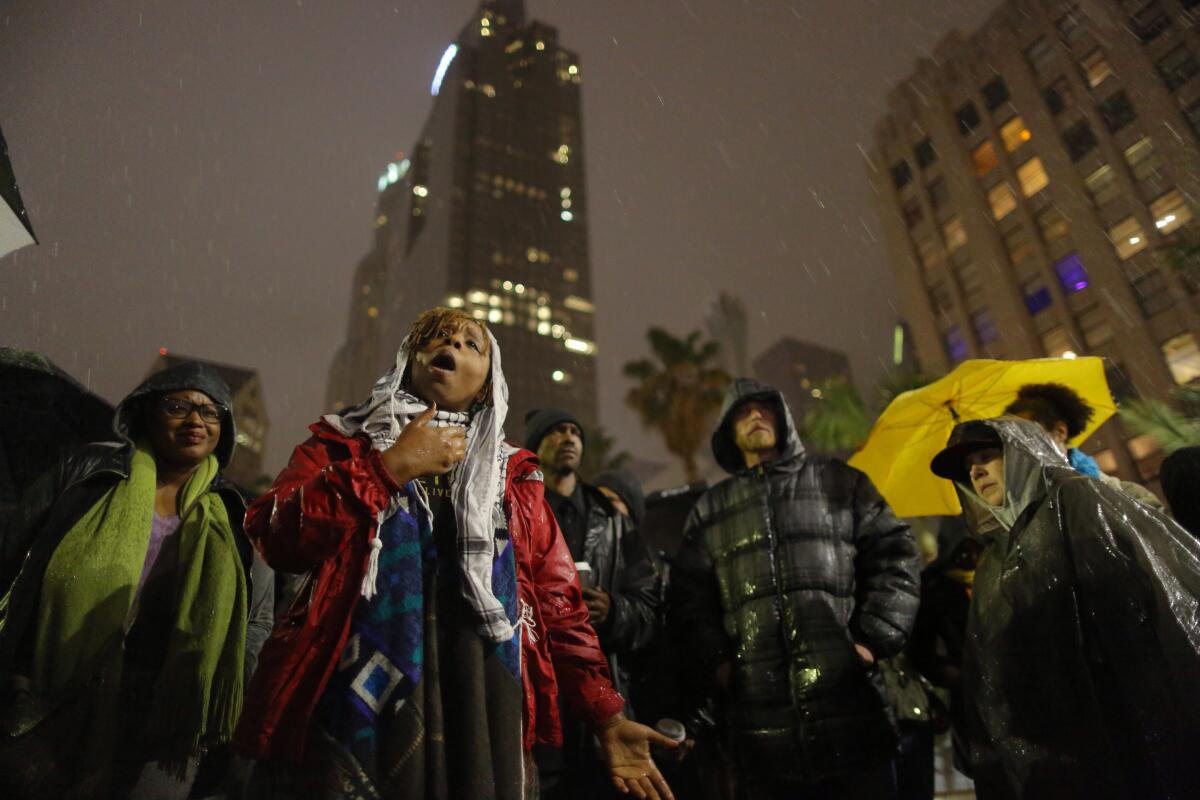
As for tensions between the global network and its chapters, Cullors said she was attempting to give the BLM global network the structure needed to manage tens of millions in donations. She also said that since publishing the open letter, four of the BLM10 chapters have accepted funding from the network, $500,000 each.
Representatives for the BLM10 declined to comment.
In addition, a report released by the global network showed that the organization ended 2020 with a balance of more than $60 million after granting $21.7 million to BLM chapters and other local organizations. An additional $8.4 million was spent on operational costs.
These sort of disputes aren’t unique to Black Lives Matter, said Charles McKinney, a civil rights movement scholar at Rhodes College in Tennessee.
“Almost every new civil rights organization was being created because of a level of dissent and disagreement amongst Black folk about how to move forward. Questions about tactics, structure, leadership — these are age-old questions,” McKinney said.
Black Lives Matter is at a crossroads, McKinney said, and ironically, the future of the movement likely depends on the organizational, financial and structural questions that caused so much tumult for the global network in 2020.
“The NAACP was founded back in 1909 and is still with us, because it is a highly structured, hierarchical organization with a very specific focus on legal discrimination. They’re not going anywhere anytime soon,” he noted. “But there’s a whole bunch of grass-roots Black organizations that no longer exist, and that’s because they did not have access to resources —they could not expand, they could not pay staff, they could not engage in the deep work.”
Though mired in controversy, Patrisse Cullors’ stepping down is just the evolution of a grass-roots organization that’s no longer quite as grass-roots.
Global network co-founder Alicia Garza, who now runs the Black Futures Lab, a think tank working to increase Black political power, said it’s hard for most people to understand what it takes to manage a major organization. She defends Cullors.
“Before I ever led something, it was really easy for me to critique people who were doing it. But once I actually ran my own organization, once I had to raise money, once I had to deal with staffing and being responsible for people’s livelihoods, my perspective changed,” Garza said.
Simpson, the mother of Richard Risher, said she takes issue with Cullors as the founder of a movement that accepts funding on behalf of Black lives because she believes those funds should go directly to the families of people killed by police.
“She can drop that bag off and get out of the fight. We don’t want her in a fight.” Simpson said. “They all say it’s a job. Well, who are you in the first place? What family said we want you to represent our children out on the streets?”
Regarding criticism that owning property and building wealth contradicts her image as a “trained Marxist,” Cullors is philosophical at first.
“I identify with Marxism. ... Marxism is one really important framework for how I understand the kind of world I want to live in. But I am still developing what my philosophy is around a socioeconomic structure. ... I want human beings to feel free and be able to evolve at their pace and to get their needs met. Is that Marxism? I know it’s not capitalism.”
She pauses before getting more personal.
“Nobody really understands the role of a movement leader, especially when it’s a Black woman or women in leadership — the level of vitriol we receive, the level of criticism, the level of expectation that we are supposed to be the mother for everybody. And that’s from Black folks and non-Black people, this idea that we have to give and give and give and give until we can no longer give.”
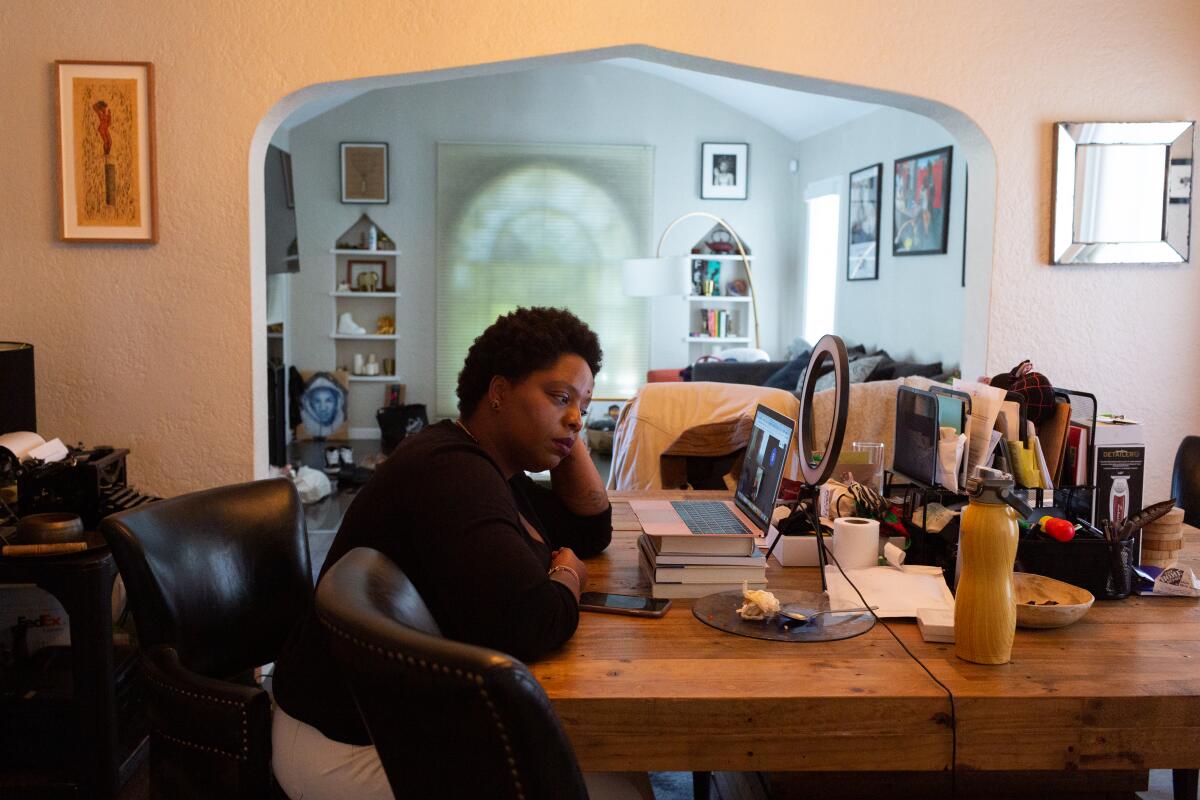
Last year, when she finally decided to seek help, Cullors hit roadblocks immediately as she scoured to find an in-patient treatment center that specializes in PTSD but also racial trauma, a place that would protect her privacy but also allow her to bring her 5-year-old. Nothing quite fit her needs, so Cullors organized her own treatment experience with the help of a team of therapists.
Her chest was tight and her stomach was in knots on July 1, when she arrived at the gates of a property she booked in a secluded area an hour outside of Los Angeles. She was afraid the press would find out that she was having a mental health crisis, or that the space was otherwise unsafe.
“I was sensitive to every sound and very paranoid; I was afraid of everything,” Cullors recalled. But her mantra, “‘I will not be a martyr,” carried her past the gates of the property and into a month of treatment.
She was treated with traditional talk therapy and somatic therapy, a form of body-centered therapy, to explore the effect of stress on her body. She spent time resting, journaling and praying.
Subscribers get early access to this story
We’re offering L.A. Times subscribers first access to our best journalism. Thank you for your support.
In therapy, Cullors acknowledged that she had been afraid for her life for years. Some threats came to her directly; sometimes the FBI alerted her of threats. Her fear was heightened when media outlets published details of her homes.
She experienced what she calls painful betrayals too, friends and allies abandoning her to fight alone when criticism came. Or worse, people attacking her whom she considered a part of her community. That’s harder to talk about.
“Never in a million years did I think that Black people wouldn’t protect me,” she said. “I was really given space to be angry; I had a lot of rage, a lot of anger, a lot of sadness.”
Still, Cullors said she takes pride in her time at BLM. She points to major policy, political and cultural shifts that occurred because of the relentless work of protests and other interventions under the Black Lives Matter banner.
“To see Black Lives Matter Canada thriving, Black Lives Matter UK thriving, Black Lives Matter stateside still here. I think it must piss off the white supremacists to know that we received resources and support,” she said.
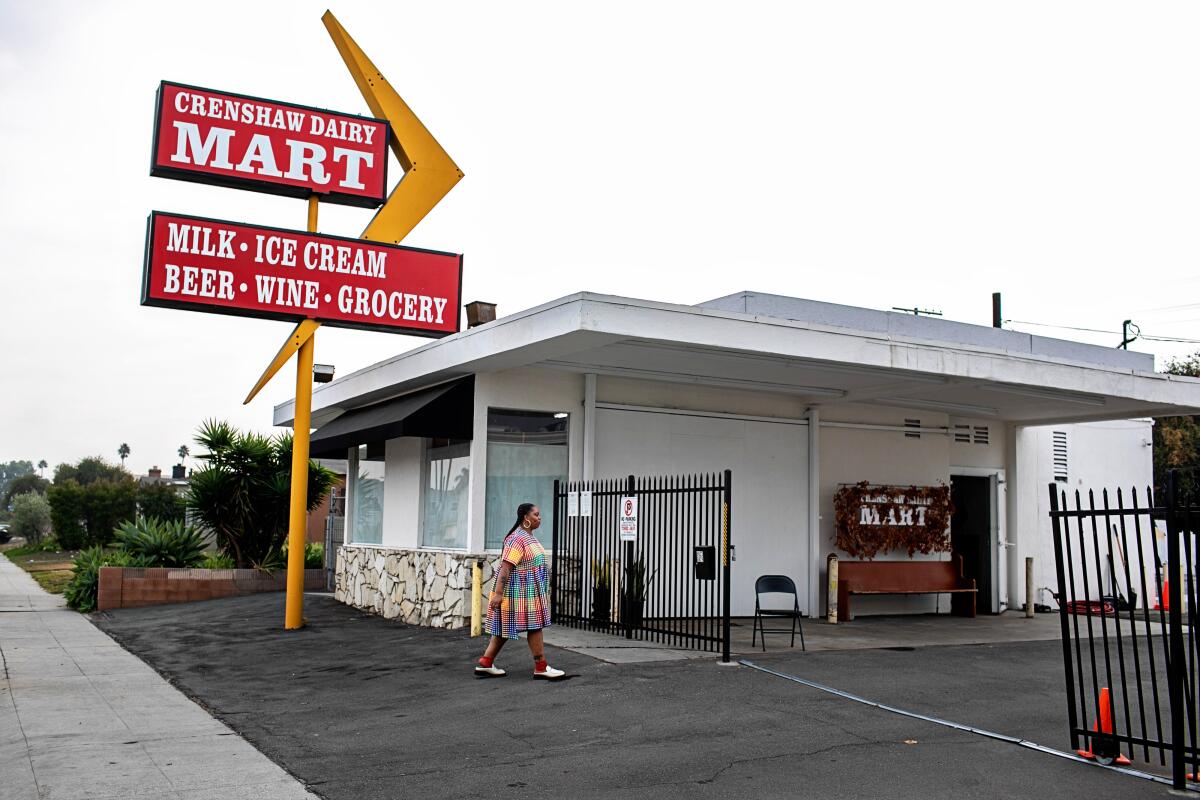
These days, she prefers to be at the Crenshaw Dairy Mart, the art gallery she and two former classmates opened in February 2020 in a former convenience store.
It’s quiet on most days, with the only reminder of Cullors’ history with BLM are the large security guards who patrol the premises.
Cullors’ studio is full of loose furniture, her old sculptural work, art supplies in cardboard boxes. She’s relaxed sitting among the piles, sorting through them piece by piece, creating a place for each item along the way. She wants to create a small, harmonious space where she can paint or perform or have meetings.
“I need to assess what needs to be kept and what doesn’t,” Cullors said about her space but also her life. “I have to actually sit and think about what my needs are.”
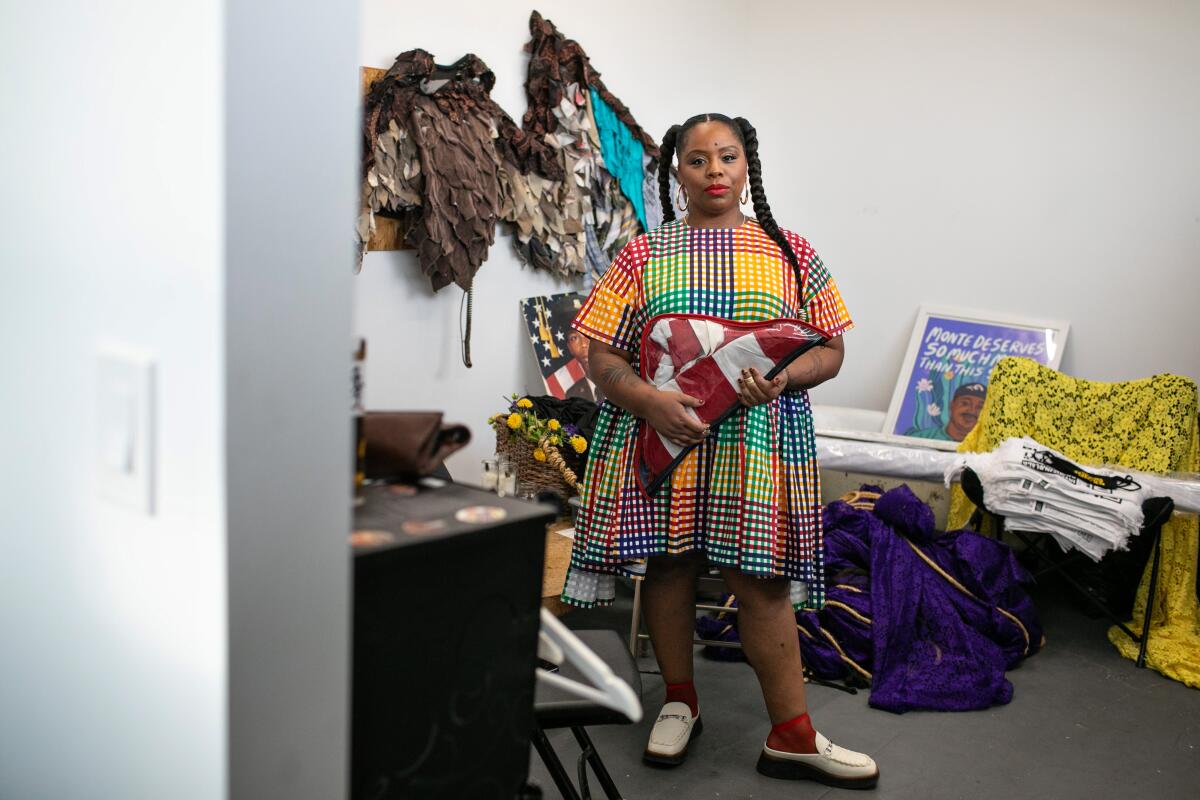
More to Read
Sign up for Essential California
The most important California stories and recommendations in your inbox every morning.
You may occasionally receive promotional content from the Los Angeles Times.
